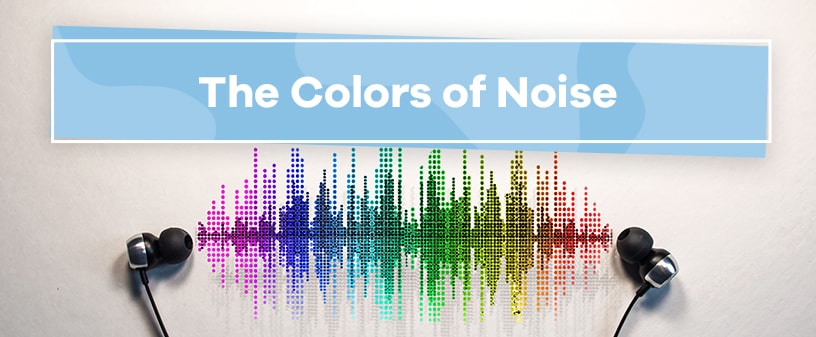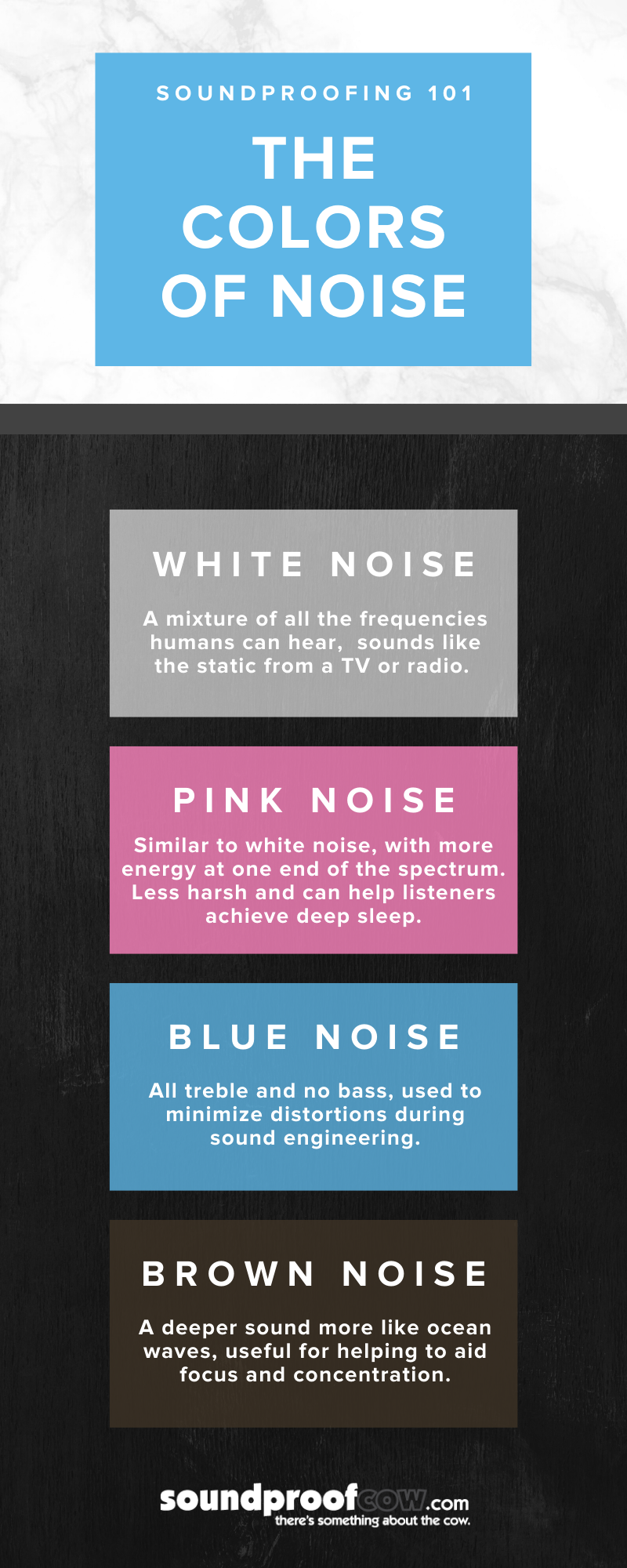
When we think of noise, we usually think of the sounds noises make — honking, shrieking, purring, melodious, rhythmic, etc. You probably rarely find yourself talking about the colors of noise. After all, you can’t see sound, so how can it have colors?
The idea of the colors of noise uses the idea of color to describe certain frequencies of noise, starting with white noise, which most people understand is a blanket of sound that drowns out other sound, in the same way white light combines and therefore drowns out all other colors of light. So, what are the colors of noise?
What Is White Noise?
True white noise is a mixture of all the frequencies humans can hear, from about 20 Hz to 20,000 Hz, all going at equal strength at the same time. The result is a sound like the static from an old television or radio when nothing is broadcasting. Because it covers all frequencies, white noise tends to make any other sounds in its path disappear. If your goal is simply to drown out an annoying sound, white noise will do the trick.
What Is Pink Noise?
Colors besides white noise are like white noise but with more energy at one end of the sound spectrum or the other. If you use a “white noise” machine, you’re probably really listening to pink noise, as this type of noise serves the same purpose of drowning out all other sounds, but is less harsh than white noise. It sounds more like a heavy rainstorm, or that static with an extra bass-like rumble. At least one study has found pink noise to be effective in helping people achieve deeper sleep.
What Is Brown Noise?
Brown noise is similar to pink noise, and technically not a noise “color” at all. Brown noise is short for Brownian noise, because its signal resembles the pattern of random movement of particles in a liquid known as Brownian motion. It’s a deeper sound — more reminiscent of ocean waves. Many people find Brown noise useful in helping them focus.
What Is Blue Noise?
Blue noise is essentially the opposite of Brown noise — its energy is concentrated at the high end of the spectrum, meaning it’s all treble and no bass. An example might be a hissing water spray. You’d most commonly use blue noise to minimize distortions during sound engineering.
What Is Gray Noise?
Gray noise is like pink noise, but sounds a little different to every listener. Ear doctors use it to treat conditions like tinnitus and hyperacusis.
What Is Black Noise?
Just like the color black is the absence of light, black noise is the absence of sound, with zero power at all frequencies. Black noise is known for being the color of silence.
To learn more about sound and sound control, visit SoundproofCow.com today.
Learn More About Understanding Sound
What is Reverberation of Sound
Impact Noise vs Airborne Noise
How to Determine the STC Rating of a Wall








